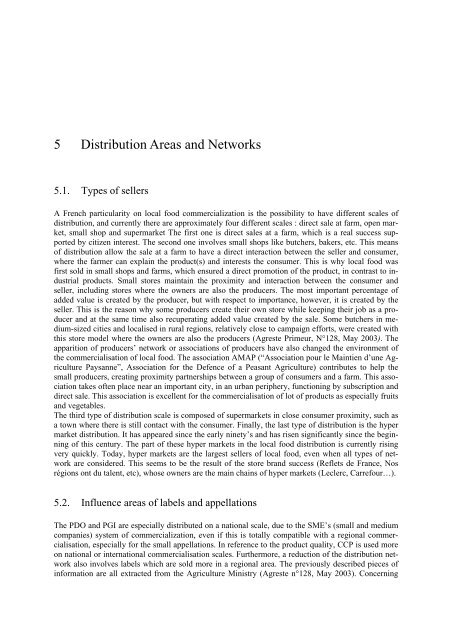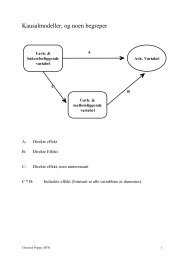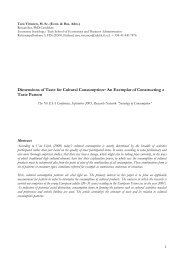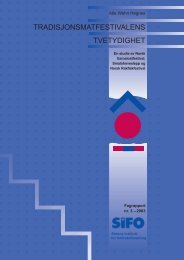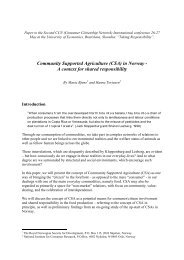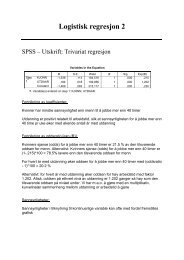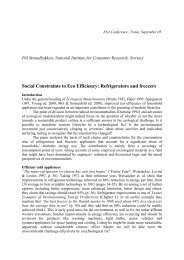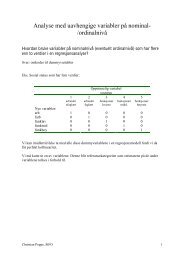Rapport nr - SIFO
Rapport nr - SIFO
Rapport nr - SIFO
- No tags were found...
You also want an ePaper? Increase the reach of your titles
YUMPU automatically turns print PDFs into web optimized ePapers that Google loves.
5 Distribution Areas and Networks5.1. Types of sellersA French particularity on local food commercialization is the possibility to have different scales ofdistribution, and currently there are approximately four different scales : direct sale at farm, open market,small shop and supermarket The first one is direct sales at a farm, which is a real success supportedby citizen interest. The second one involves small shops like butchers, bakers, etc. This meansof distribution allow the sale at a farm to have a direct interaction between the seller and consumer,where the farmer can explain the product(s) and interests the consumer. This is why local food wasfirst sold in small shops and farms, which ensured a direct promotion of the product, in contrast to industrialproducts. Small stores maintain the proximity and interaction between the consumer andseller, including stores where the owners are also the producers. The most important percentage ofadded value is created by the producer, but with respect to importance, however, it is created by theseller. This is the reason why some producers create their own store while keeping their job as a producerand at the same time also recuperating added value created by the sale. Some butchers in medium-sizedcities and localised in rural regions, relatively close to campaign efforts, were created withthis store model where the owners are also the producers (Agreste Primeur, N°128, May 2003). Theapparition of producers’ network or associations of producers have also changed the environment ofthe commercialisation of local food. The association AMAP (“Association pour le Maintien d’une AgriculturePaysanne”, Association for the Defence of a Peasant Agriculture) contributes to help thesmall producers, creating proximity partnerships between a group of consumers and a farm. This associationtakes often place near an important city, in an urban periphery, functioning by subscription anddirect sale. This association is excellent for the commercialisation of lot of products as especially fruitsand vegetables.The third type of distribution scale is composed of supermarkets in close consumer proximity, such asa town where there is still contact with the consumer. Finally, the last type of distribution is the hypermarket distribution. It has appeared since the early ninety’s and has risen significantly since the beginningof this century. The part of these hyper markets in the local food distribution is currently risingvery quickly. Today, hyper markets are the largest sellers of local food, even when all types of networkare considered. This seems to be the result of the store brand success (Reflets de France, Nosrégions ont du talent, etc), whose owners are the main chains of hyper markets (Leclerc, Carrefour…).5.2. Influence areas of labels and appellationsThe PDO and PGI are especially distributed on a national scale, due to the SME’s (small and mediumcompanies) system of commercialization, even if this is totally compatible with a regional commercialisation,especially for the small appellations. In reference to the product quality, CCP is used moreon national or international commercialisation scales. Furthermore, a reduction of the distribution networkalso involves labels which are sold more in a regional area. The previously described pieces ofinformation are all extracted from the Agriculture Ministry (Agreste n°128, May 2003). Concerning


